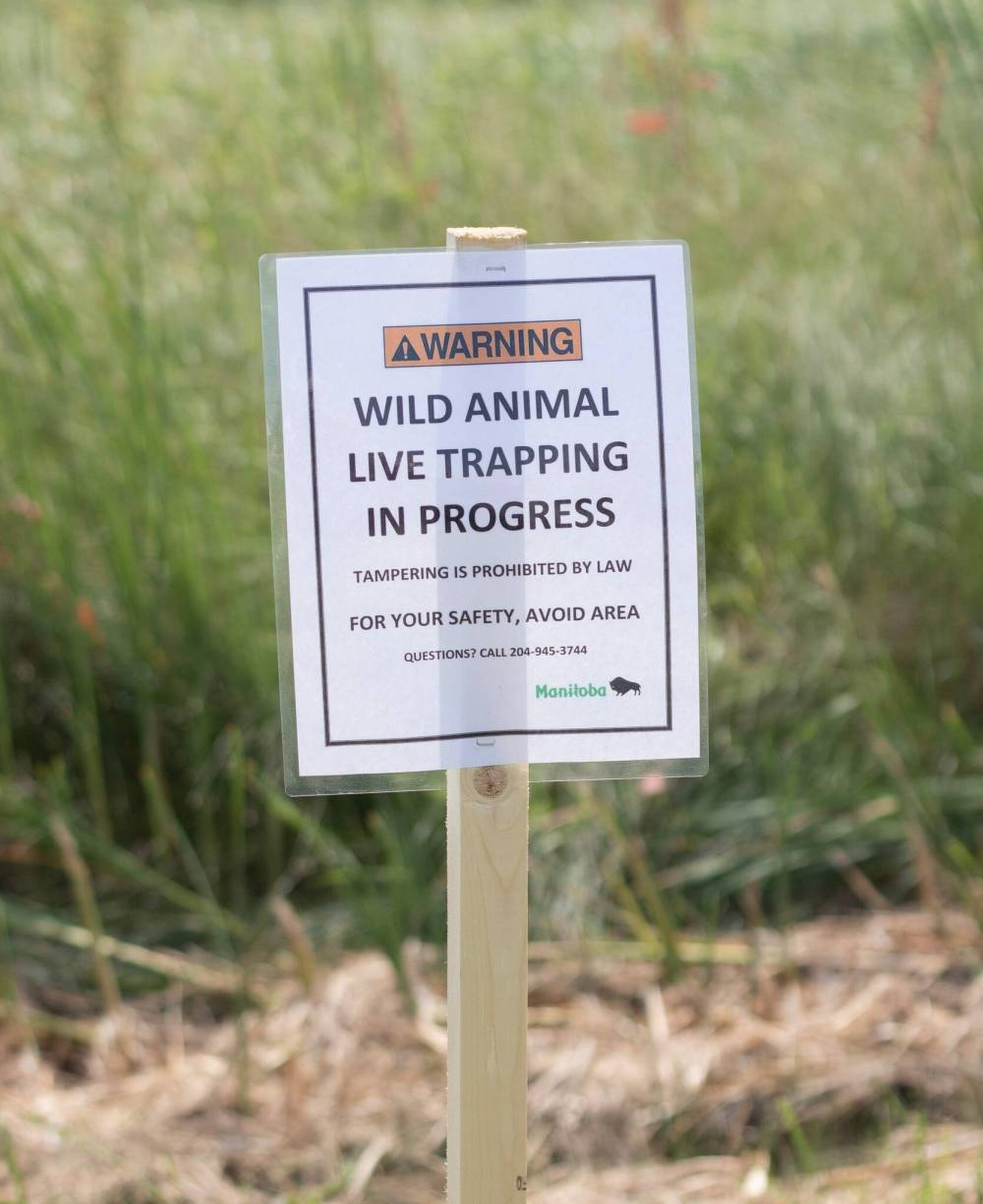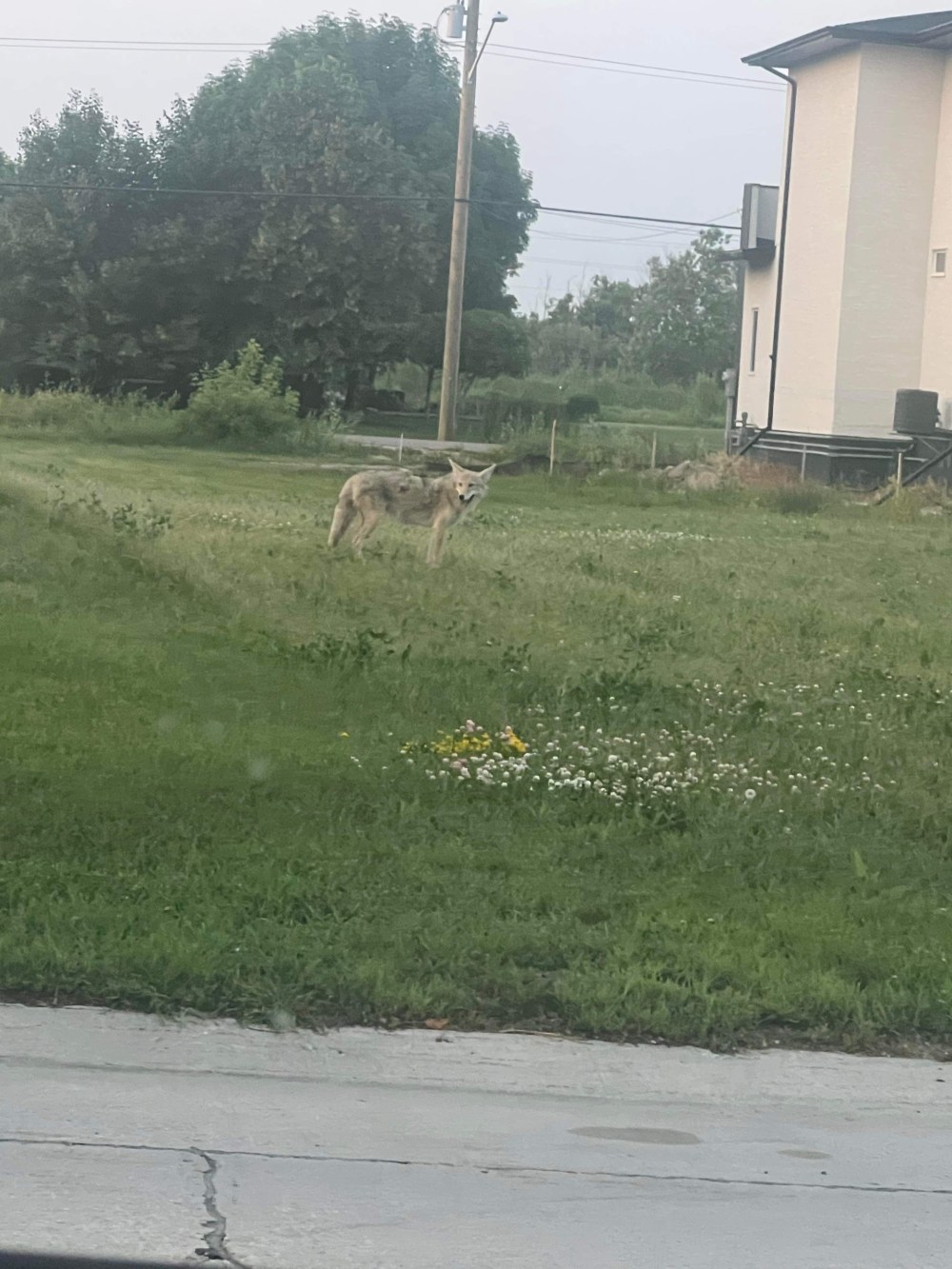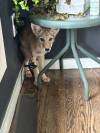Leg-hold traps used in full-on effort to track coyote after second attack
Read this article for free:
or
Already have an account? Log in here »
To continue reading, please subscribe:
Monthly Digital Subscription
$0 for the first 4 weeks*
- Enjoy unlimited reading on winnipegfreepress.com
- Read the E-Edition, our digital replica newspaper
- Access News Break, our award-winning app
- Play interactive puzzles
*No charge for 4 weeks then price increases to the regular rate of $19.00 plus GST every four weeks. Offer available to new and qualified returning subscribers only. Cancel any time.
Monthly Digital Subscription
$4.75/week*
- Enjoy unlimited reading on winnipegfreepress.com
- Read the E-Edition, our digital replica newspaper
- Access News Break, our award-winning app
- Play interactive puzzles
*Billed as $19 plus GST every four weeks. Cancel any time.
To continue reading, please subscribe:
Add Free Press access to your Brandon Sun subscription for only an additional
$1 for the first 4 weeks*
*Your next subscription payment will increase by $1.00 and you will be charged $16.99 plus GST for four weeks. After four weeks, your payment will increase to $23.99 plus GST every four weeks.
Read unlimited articles for free today:
or
Already have an account? Log in here »
Hey there, time traveller!
This article was published 03/07/2023 (891 days ago), so information in it may no longer be current.
A wildlife trapper and Manitoba Conservation continued to try to capture at least one coyote Monday, after two children were attacked in less than a week in a north Winnipeg neighbourhood.
The search for the coyote or coyotes responsible for the maulings focused on dense bush close to homes and a church near Knowles Avenue and Gateway Road, just south of the Perimeter Highway.
A coyote stands in an empty lot across from Olympic Park on Headmaster Row, just west of Lagimodiere Boulevard, on the evening of June 30. It is not known if it was the same coyote that attacked a four-year-old child that day.“It sounds like a very aggressive animal or potential family of animals,” Colleen Cassady St. Clair, a professor of biological sciences at the University of Alberta, said following the latest attack.
Aggressive behaviour could be difficult to reverse, if both attacks were carried out by the same coyote, she said.
The Free Press understands the trapper is using leg-hold traps, after he was hired by the province following the first attack June 24 but before the second mauling June 30.
The province had said the coyote that attacked the first victim, a nine-year-old boy who suffered head and leg wounds, near Popko Crescent and Knowles, would be euthanized.
A spokesperson was not available to comment on the latest attack due to the Canada Day statutory holiday.
In an emailed bulletin Sunday, the province said a four-year-old child had been released from hospital after being attacked in the Headmaster Row area of North Kildonan.
These are believed to be Manitoba’s first documented coyote attacks on humans.
In addition to hiring a member of the Manitoba Trappers Association, conservation officers have stepped up patrols.
The dense bush is located just east of the Northeast Pioneers Greenway on Winnipeg’s boundary with the RM of East St. Paul.
“It sounds like a very aggressive animal or potential family of animals.”–Colleen Cassady St. Clair
While attacks are very rare, this is peak season for conflict between urban coyotes and humans because pups are emerging from dens, researchers say.
Most attacks at this time of year are defensive in nature, said St. Clair and Shelley Alexander, a professor in the University of Calgary geography department.
Attacks tend to happen in clusters and are usually attributed to the same dominant pair of adults or family, said St. Clair.
The victims tend to be vulnerable people, and the defensive behaviour usually declines around mid-July, she said.
North Kildonan Coun. Jeff Browaty said a den is believed to be located in the area of the attacks.
Identifying the coyote or coyotes responsible for the maulings could be a challenge, said Alexander.

If one or more coyotes is captured, bite forensics or DNA analysis — if the children’s wounds were swabbed for animal saliva — could be used to confirm if the animal or animals were involved, said Alexander.
About three people are bitten or scratched by a coyote in Canada each year, based on her research.
“When it does happen, it’s often the same coyote or one to two coyotes in the same area,” she said.
In every case she has evaluated, the coyote was hand-fed or had a human food source such as garbage, compost or fallen fruit or bird seed.
She believes that could have been a factor in the Winnipeg cases.
People should never feed a coyote, intentionally or otherwise, said St. Clair.
“That is the most common way that coyotes become bold,” she said.
Mike Thiessen / Winnipeg Free Press A wildlife trapper and Manitoba Conservation continued to try to capture at least one coyote Monday, after two children were attacked in less than a week in a north Winnipeg neighbourhood.
The attacks have sparked a conversation about how the province should deal with the coyote or coyotes involved.
St. Clair believes the “lethal removal” — via trapping, in this case — is the correct solution.
Alexander believes there is still time to use “aversion conditioning” to encourage coyotes to avoid humans.
“Killing should be the last stage, and it should definitely be on the table if you have a repeat offender,” said Alexander.
Removing one or more coyotes through methods such as trapping does not address a root cause such as hand-feeding or human food sources, she said.
While it could address the problem, the removal of a coyote could destabilize a family or put it in a desperate situation to find food if one parent is left to raise the pups, Alexander added.
Browaty, who called the attacks a “disturbing trend,” believes the province, which is responsible for managing coyotes, should conduct a cull.
“I personally believe that, unfortunately, due to these (attacks) and a fear factor among the residents in the area, a culling is warranted,” he said.
Alexander and St. Clair said a cull is not the solution because it would be counterproductive.
Coyotes would adapt by having pups at a younger age and larger litters, leading to a denser population, they said.
Alexander said the breakdown of an existing social structure could increase the potential for conflict with humans.
“If you blow that system apart, you just create chaos,” she said. “(Coyotes) are vital in this ecosystem for controlling many other species.”
The researchers said it’s important for people to learn how to coexist with wildlife and reduce the risk of conflict with coyotes, which have adapted to urban living but are generally wary of humans.
After the latest attack, the province encouraged residents to supervise children closely, feed pets indoors, keep animals on a leash and reduce attractants.
It said people should make noise, make themselves appear large and refrain from running if they see a coyote because it could incite a chase.
The second attack has put some residents on a heightened state of vigilance.
“It’s scary, very scary,” Kim Andrysiak said while walking her two small dogs on the greenway, a former rail line that’s now used by pedestrians and cyclists.
Andrysiak wants the coyotes to be humanely removed or moved on from the area.
Mike Thiessen / Winnipeg Free Press Herman Sawatzky, who rides his bike on the greenway, said he has seen more coyotes than in the past, but he’s never been threatened.
“I would like to see them all moved out to a safe place for them and a safe place for us,” she said. “If it’s happened twice now, who’s to say it won’t happen again?”
Steve Halabura, 82, said he’s never had so many sightings during his walks on the trail.
“They’ve got to do something about it,” he said of the attacks.
Halabura said he was recently followed by a coyote, and on another occasion had to throw rocks to scare off one that wouldn’t budge while sitting on the trail.
Herman Sawatzky, who rides his bike on the greenway, said he has seen more coyotes than in the past, but he’s never been threatened.
“In the past, you would see one, but now it’s almost on a regular basis,” he said. “They’re not scared of people.”
chris.kitching@freepress.mb.ca
Twitter: @chriskitching

Chris Kitching is a general assignment reporter at the Free Press. He began his newspaper career in 2001, with stops in Winnipeg, Toronto and London, England, along the way. After returning to Winnipeg, he joined the Free Press in 2021, and now covers a little bit of everything for the newspaper. Read more about Chris.
Every piece of reporting Chris produces is reviewed by an editing team before it is posted online or published in print — part of the Free Press‘s tradition, since 1872, of producing reliable independent journalism. Read more about Free Press’s history and mandate, and learn how our newsroom operates.
Our newsroom depends on a growing audience of readers to power our journalism. If you are not a paid reader, please consider becoming a subscriber.
Our newsroom depends on its audience of readers to power our journalism. Thank you for your support.
History
Updated on Monday, July 3, 2023 6:47 PM CDT: Adds art












